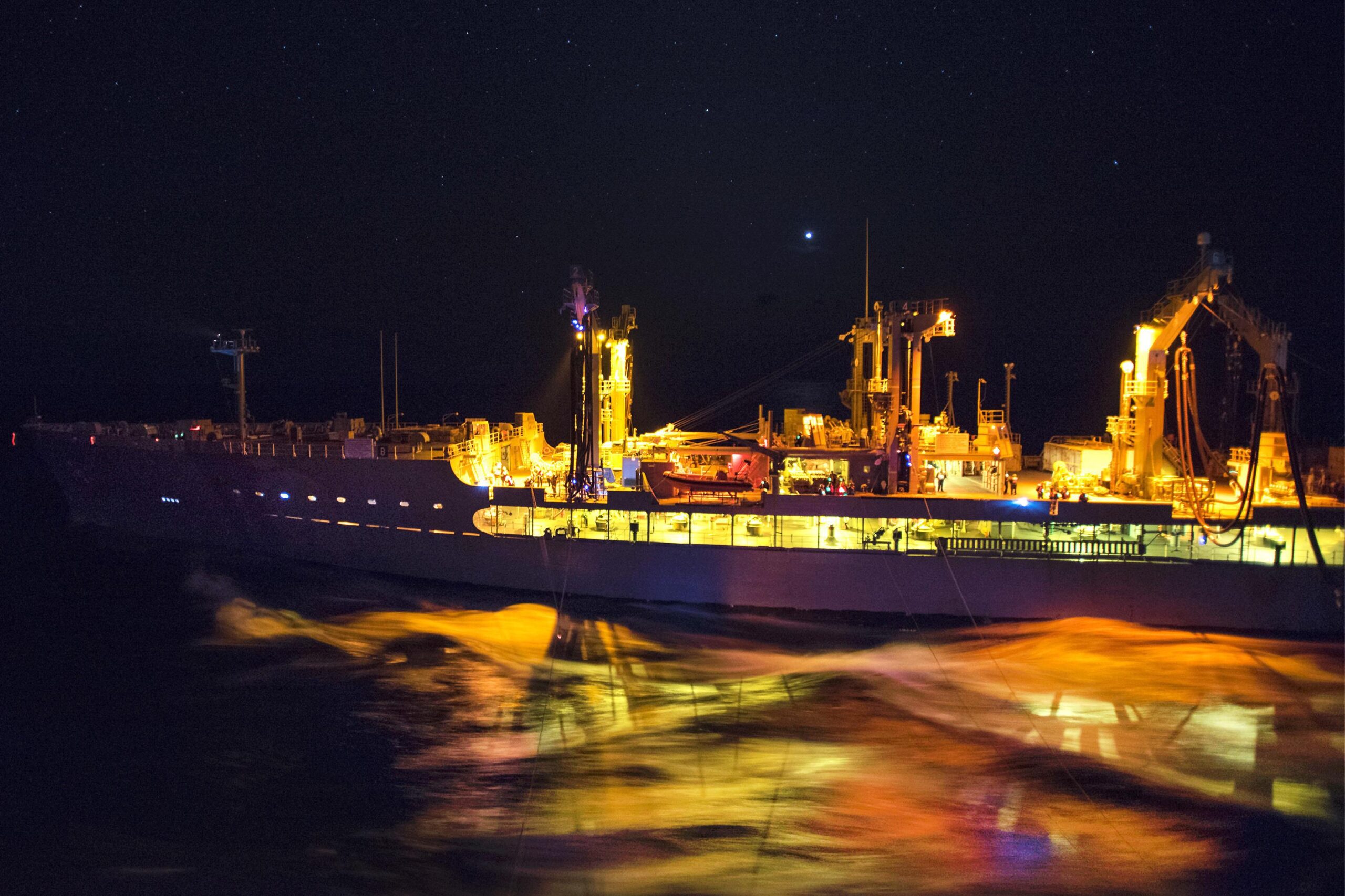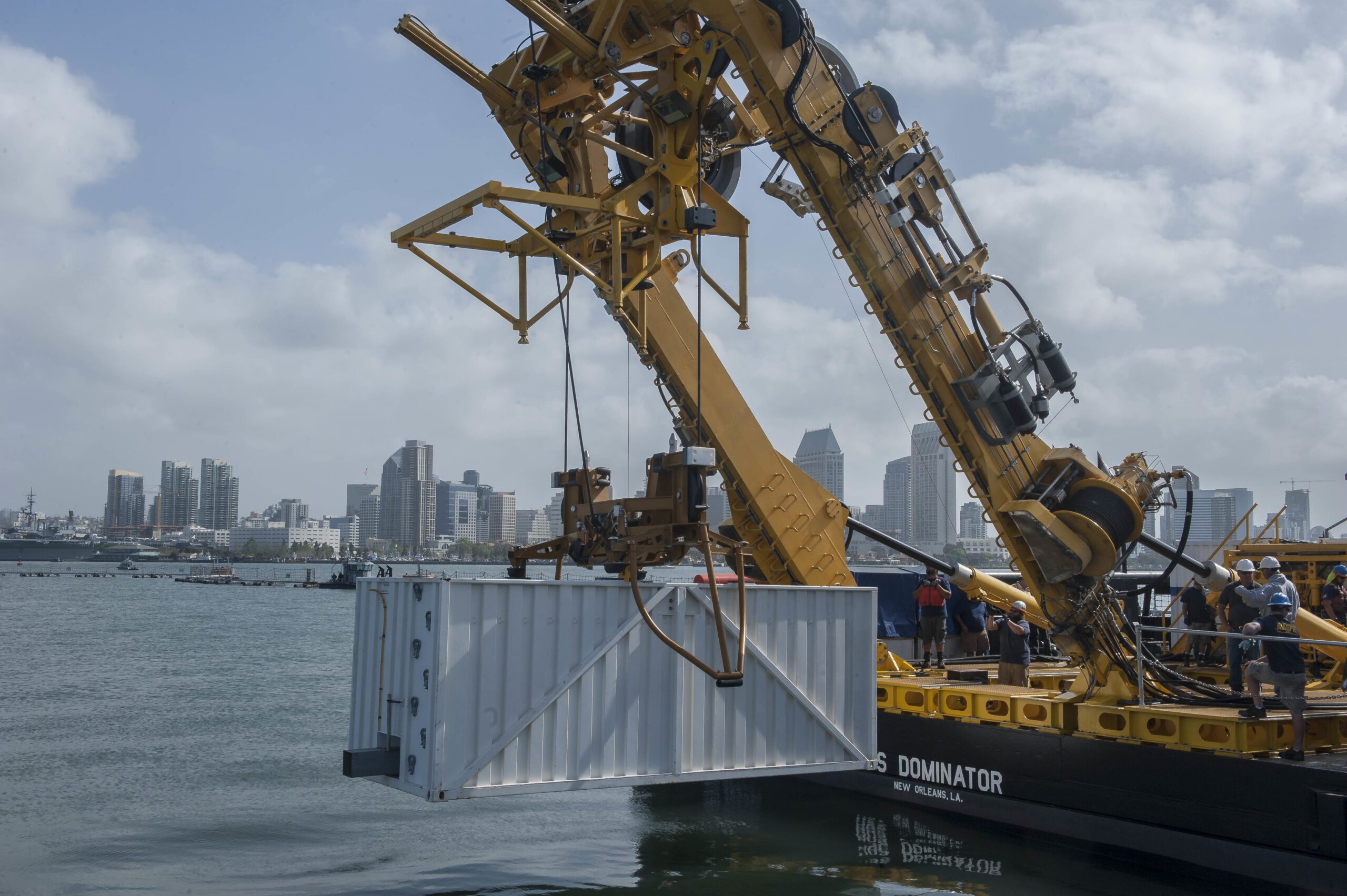by James Stavridis (Bloomberg Opinion) As the security situation deteriorates in Sudan, and thousands of US citizens remain in the war-torn country, the Navy is undertaking a mission it has done many, many times over the years: evacuations of diplomats and other Americans needing to depart a combat zone.
This is more than a humanitarian mission. The Sudan operation is providing the Navy with a chance to put some seemingly bizarre, but in fact hugely valuable, combat-support ships through their paces in a real-life situation.
Also Read: U.S. Navy Ship In Sudan To Help Evacuate Americans
Evacuations of civilians and troops are dangerous and unpredictable. Sometimes, as with the fall of Kabul in Afghanistan in 2021, they can go terribly wrong. At other times — think Vietnam in 1975 — they can be chaotic but overall fairly successful. Often when the nation in question has a coast, as Sudan does on the Red Sea, the Navy conducts the bulk of the operations.
Normally, such missions would be conducted from massive amphibious warships such as the “big deck” helicopter carriers of the Wasp and America classes. These ships ferry Marines around the world, conduct amphibious attacks and carry vertical-lift jump-jets for combat strikes ashore. But the operation in Sudan, which is (so far) relatively small, looks quite different.
While there is always a risk to evacuees, in Sudan it is unlikely that either side in the civil war would deliberately target civilians. So we are seeing the use of two warships that have little offensive combat capability but excellent, adaptable logistical-support abilities: the Brunswick and the Lewis B. Puller.
Also Read: U.S. Navy Turns Merchant Marine-Operated USNS Lewis B. Puller Into Commissioned Warship

I know both of these ship classes well, having played a role in their adoption over a decade ago. The Lewis B. Puller is an “expeditionary mobile base” with a crew of only about 150 (as opposed to 5,000 on a carrier), but a huge and flexible capacity to operate helicopters, drop off special forces, provide medical and logistical support ashore, and host hundreds of civilian evacuees.
The Navy began to experiment with this type of at-sea base after the 9/11 attacks. I was heading up the tactical think tank “Deep Blue” in the aftermath of the plane striking the Pentagon. We were preparing for operations in the world’s littoral regions (shallow areas near shores) for what would become known as the Global War on Terrorism.
The Navy did not want to devote its nuclear aircraft carriers or even big-deck amphibious ships to such missions, so we looked for alternatives that were far less costly, both in terms of manpower and sticker price. These mobile bases, with hulls based on those of oilers, are large and capable — more than 750 feet long and displacing 80,000 tons. But they are a bargain at $650 million, as compared to nearly $15 billion for a new nuclear carrier.
Related Book: Sea Power: The History and Geopolitics of the World’s Oceans by Admiral James Stavridis
The other main ship in the Sudan operation, the Brunswick, is far smaller but nearly three times speedier. Known as an “expeditionary fast transport,” the Navy commissioned six of these craft, which ride on a catamaran hull and can move at over 40 knots. At only 300 feet in length, they can carry more than 600 tons of cargo and, for brief periods, hundreds of passengers. Operated by a tiny crew of around 40, they even have a small but capable helicopter deck.
As commander of US Southern Command in the 2000s, I experimented with an early variant of this class for Caribbean counternarcotics operations, where we very successfully embarked alongside Coast Guard law-enforcement detachments.
Because neither of these ships is armed beyond light machine guns, a Navy destroyer is typically deployed with them to bring defensive firepower. In Sudan, the Truxton, an Arleigh Burke-class guided-missile destroyer, accompanied the Puller and Brunswick. Drones are also being used to provide overwatch ashore in case of any threat to the civilian evacuation operations.
These two new ship classes have a broad range of uses, both in noncombatant roles like evacuations but also in support of combat. To name a few potential missions: operations in the island chains of the western Pacific; oil and gas protection off the coast of Norway; counterterrorism at the Horn of Africa or islands in the Philippines; natural-disaster relief; medical diplomacy; and further evacuations of noncombatants.
The nature of security is far broader than simply lobbing Tomahawk missiles, dropping precision-guided bombs or landing Marines. The Brunswick and Puller are showing a wide spectrum of abilities for conducting operations fit for the modern world.
James Stavridis is a Bloomberg Opinion columnist. A retired U.S. Navy admiral, former supreme allied commander of NATO, and dean emeritus of the Fletcher School of Law and Diplomacy at Tufts University, he is vice chairman of global affairs at the Carlyle Group. He is the author most recently of “To Risk It All: Nine Conflicts and the Crucible of Decision.” @stavridisj © 2023 Bloomberg L.P.
Sign up for our newsletter
Be the First
to Know

Join the 88,559 members that receive our newsletter.
Have a news tip? Let us know.
Related Articles
US Marine Corps And US Merchant Marine Deepen Ties
by Captain John Konrad (gCaptain) In recent months, the US Navy’s critical lack of available amphibious ships has led to the Marine Corps being unable to assist in major crises…
May 1, 2023 Total Views: 7935  MSC
MSC
Replenishing Controversy: The US Navy’s New Tanker Program
By John Konrad (gCaptain) A Congressional Research Study update by Ronald O’Rourke shows the US Navy has earmarked $8.8 million in research and development funding for a new light tanker…
April 20, 2023 Total Views: 6194  MSC
MSC
US Marine Corps Experiments Offshore
by John Konrad (gCaptain) According to Craig Hooper, a senior military contributor for Forbes, the US Marine Corps has been working with offshore oil and gas experts to develop a…
March 3, 2023 Total Views: 15378 
Sign Up Now for gCaptain Daily
Just enter your email and get hot news every morning 

SIGN UP
Get the latest gCaptain articles and breaking news
Sign up for gCaptain Daily
Get the latest gCaptain articles and breaking news
We use cookies on our website to give you the most relevant experience. By clicking “Accept”, you consent to the use of ALL the cookies.Cookie settingsManage consent Close
Privacy Overview
This website uses cookies to improve your experience while you navigate through the website. Out of these, the cookies that are categorized as necessary are stored on your browser as they are essential for the working of basic functionalities of the website. We also use third-party cookies that help us analyze and understand how you use this website. These cookies will be stored in your browser only with your consent. You also have the option to opt-out of these cookies. But opting out of some of these cookies may affect your browsing experience. Necessary cookies are absolutely essential for the website to function properly. This category only includes cookies that ensures basic functionalities and security features of the website. These cookies do not store any personal information. Any cookies that may not be particularly necessary for the website to function and is used specifically to collect user personal data via analytics, ads, other embedded contents are termed as non-necessary cookies. It is mandatory to procure user consent prior to running these cookies on your website. {"Tags":["military sealift command","sudan","U.S. Navy"],"Categories":["MSC"],"Excerpt":"by James Stavridisu00a0 (Bloomberg Opinion) As the security situation deteriorates in Sudan, and thousands ofu00a0US citizensu00a0remain in the war-torn country, the Navy is undertaking a mission it has done many,…"}





